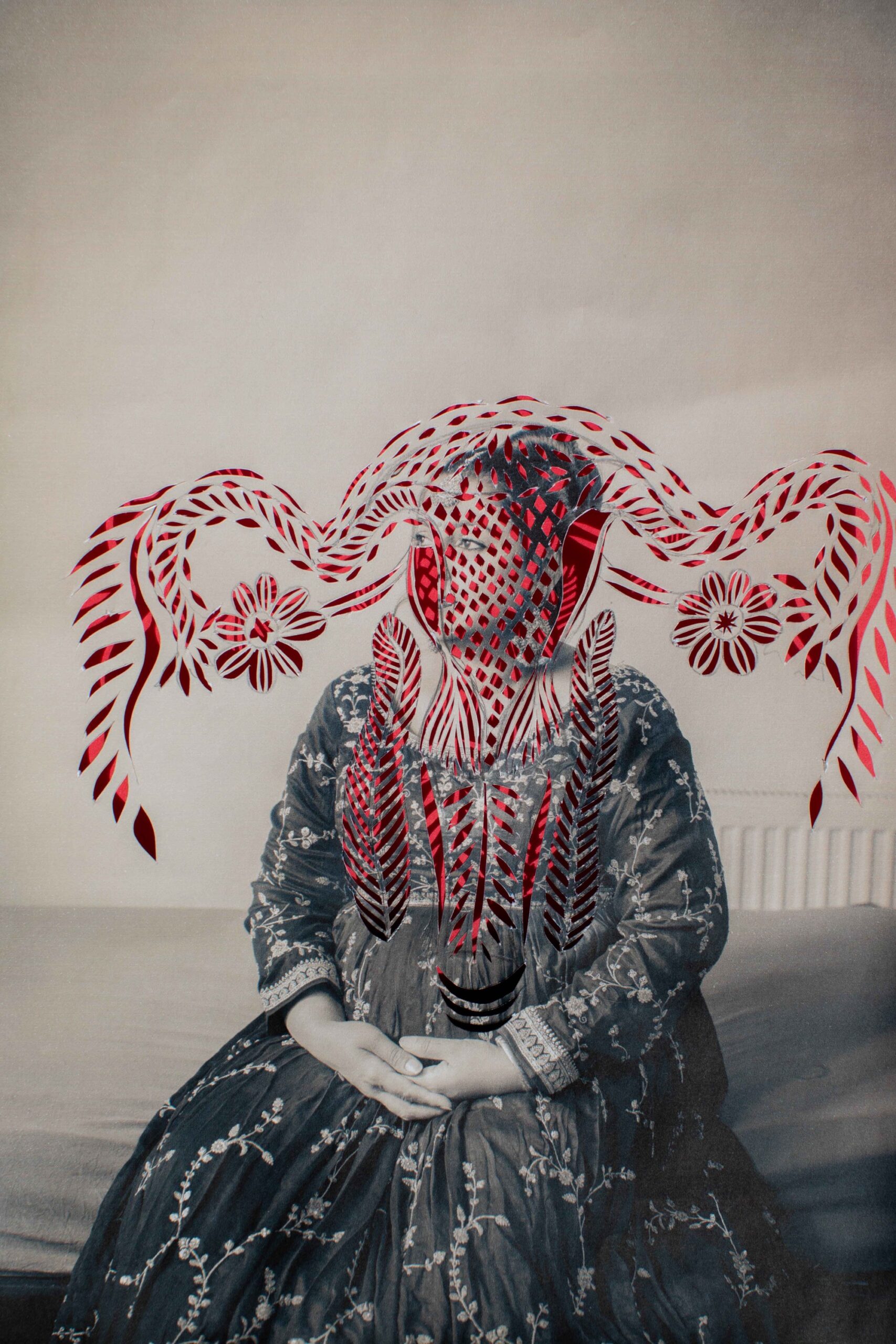
Art
Photography
#paper
#portraits
#Sujata Setia
June 26, 2024
Kate Mothes
“पिंजर (Bastille).” All images © Sujata Setia, shared with permission
For centuries in southeast Asia, lingchi was employed as a particularly brutal form of torture in which a knife was used to methodically remove parts of the body over long periods. Translated as “death by a thousand cuts,” the ancient practice provides the metaphorical groundwork for London-based Indian artist Sujata Setia’s stirring series A Thousand Cuts.
For the past two years, Setia has collaborated with SHEWISE, a charity that empowers marginalized women to overcome trauma and cultivate lives free from oppression and violence. Through this connection, she spent two years photographing survivors of abuse in South Asian communities across the U.K. “A Thousand Cuts is an effort to understand abuse from many different frames of reference,” the artist says in a statement.
The project began with implementing what Setia calls a “metaphorical waiting room”—a space co-organized with SHEWISE within a church in Hounslow where strangers could speak with one another without fear of judgment. “These initial dialogues led to the creation of a vector of faith between myself and the participants in this project,” Setia says. “We then moved on to private one-on-one conversations and me photographing each survivor individually, with their consent and their complete control on the way they want to be ‘seen.’”

“मेरी हद्द (The premise of my existence)”
Bringing these women’s narratives to light is an important aspect of Setia’s work, which focuses on events and experiences that are often unseen and unrecognized. Throughout the project, the artist recorded brief stories from the women she photographed.
The title for “मेरी हद्द (The premise of my existence),” for example, draws on the subject’s experience with an arranged marriage to a man more than 20 years her senior. “My family told me, ‘You will have a lavish life. If he is older, then he will obviously love and respect you.’” They married and moved to a new country, but she was far from secure. “Now his family has the custody of my children,” she says. “I only get to see them for a few hours every week.”
Setia emphasizes the resilience and strength of survivors, carefully balancing the reality of their experiences with renewed hope and healing. The woman portrayed in “अल्ला कि गाँए (God’s Cow)” shared, “I wasn’t ambitious. I was not career-oriented. I was a simple, quiet girl who always did what her family asked of her. I was ‘God’s cow.’” But her situation at home became abusive and continued to escalate. One day, she found an untapped well of strength: “I lifted a stick, and I didn’t hit him, but I started hitting the door, and I hit it so much that the door almost broke… From that day, he did not raise his hand on me.”

Left: “एक अदभुत परिंदा (Phoenix).” Right: “सर पे छत (A place to call home)”
Setia prints the photos at A4 size, approximately the same as U.S. letter paper. The small, accessible scale signifies how domestic violence most often occurs in everyday private spaces. She utilizes the traditional Indian paper-cutting art known as sanjhi, in which tiny incisions form intricate designs. For the anonymous subjects of Setia’s portraits, the patterns reveal deep red backgrounds and motifs of flora, birds, and female anatomy.
“The red colour underneath the portraits signifies not just martyrdom and strength but also the onset of a new beginning,” Setia says. The intricate patterns speak to what she describes as the “complex reality” of navigating society as a South Asian woman who has experienced domestic abuse. In a recent article in The Guardian, the artist describes how taking a self-portrait and placing it among the group has been part of “absolutely the most healing process.”
Setia is the winner of the creative category in the 2024 Sony World Photography Awards with A Thousand Cuts. Explore more work on her website and Instagram.

“अल्ला कि गाँए (God’s Cow)”

“कितनी गिरह? (How many more Knots?)”

Left: “सपनों कि साज़िश (Conspiracy of Dreams).” Right: “अवरोध की उड़ान”(Fenced Flight)”

“मुझसे मुलाकात (Finding Me)”

“काग़ज़ का फ़ूल (Paper Flower)”
#paper
#portraits
#Sujata Setia
Do stories and artists like this matter to you? Become a Colossal Member today and support independent arts publishing for as little as $5 per month. You’ll connect with a community of like-minded readers who are passionate about contemporary art, read articles and newsletters ad-free, sustain our interview series, get discounts and early access to our limited-edition print releases, and much more. Join now!

